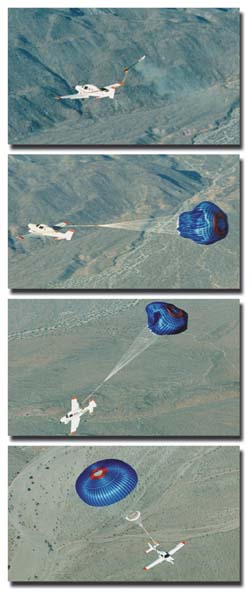Paul Bertorelli has written two detailed posts about Cirrus accident statistics and the Cirrus Airframe Parachute System (CAPS) that are well worth reading by Cirrus pilots and owners. In Paul’s first post, he attempted to put some hard numbers on Cirrus accident statistics, noting that the overall general aviation accident rate is 6.3/100,000 and the fatal rate is 1.2 while the Cirrus overall rate is 3.2 and the fatal rate is 1.6. He concluded that these statistics alone (despite the slightly higher fatality rate) give lie to any claims from Cirrus bashers that the aircraft has a terrible accident rate but he also noted that Cirrus accidents seem to get wider media attention than Cessna accidents.
 However, the statistics also show that roughly half of all Cirrus accidents that do occur end up being fatal accidents. Specifically, there have been 83 fatal Cirrus accidents but if just half of them had been Cirrus parachute saves instead, the Cirrus fatal rate would be .82/100,000 – substantially lower than the general aviation average. Hence, Paul concluded that Cirrus aircraft, even with their parachute systems, aren’t much different than any other GA aircraft but instead they are only as safe as their owners or pilots make them.
However, the statistics also show that roughly half of all Cirrus accidents that do occur end up being fatal accidents. Specifically, there have been 83 fatal Cirrus accidents but if just half of them had been Cirrus parachute saves instead, the Cirrus fatal rate would be .82/100,000 – substantially lower than the general aviation average. Hence, Paul concluded that Cirrus aircraft, even with their parachute systems, aren’t much different than any other GA aircraft but instead they are only as safe as their owners or pilots make them.
In Paul’s second post (Cirrus Parachute: A Successful Failure?), he recounted an incident where a Cirrus pilot with 473 hours of total time decided to tackle night IMC over high terrain (but no icy conditions) – something Paul would not ever consider doing. The pilot’s aircraft was equipped with the TKS anti-icing system and a parachute but in the pilot’s last transmission, he indicated he was icing up and then he pulled the parachute outside of the operating envelope of the system – leading to a fatal crash.
Paul concluded that pilots might be willing to take more risks when they have the Cirrus Airframe Parachute System and other such systems but he also noted that why pilots caught in a jam aren’t resorting to the parachute more often (thus lowering the fatality rate) is unknown. He also commented that:
It does, after all, get complicated. If you’re thinking about deploying the parachute, you need to do it within the system’s envelope. So as your mind starts to turn to mush, you have to be aware of that. Yet another thing to parse as you try to sort out whatever problem is making you think about the parachute in the first place.
Paul then wrote that perhaps the the Cirrus Airframe Parachute System:
…isn’t well trained enough, isn’t well understood enough and isn’t well-enough incorporated into the OODA loop to survive the tunnel vision that any about-to-have-an-accident pilot is going to suffer. In other words, they don’t pull the handle because they can’t pull the handle.
At the end of his post, Paul concluded that he believes the Cirrus Airframe Parachute System is a good idea and that it has not been oversold and that he would want it in any aircraft he could afford. Nevertheless, he also concluded that thinking something is a good idea and then having it have a meaningful impact on accident rates are “two different things.”
[…] Read Full Article This entry was posted in INTERESTING ARTICLES FROM THE WEB. Bookmark the permalink. ← Pompeo Launches Aviation Petition […]